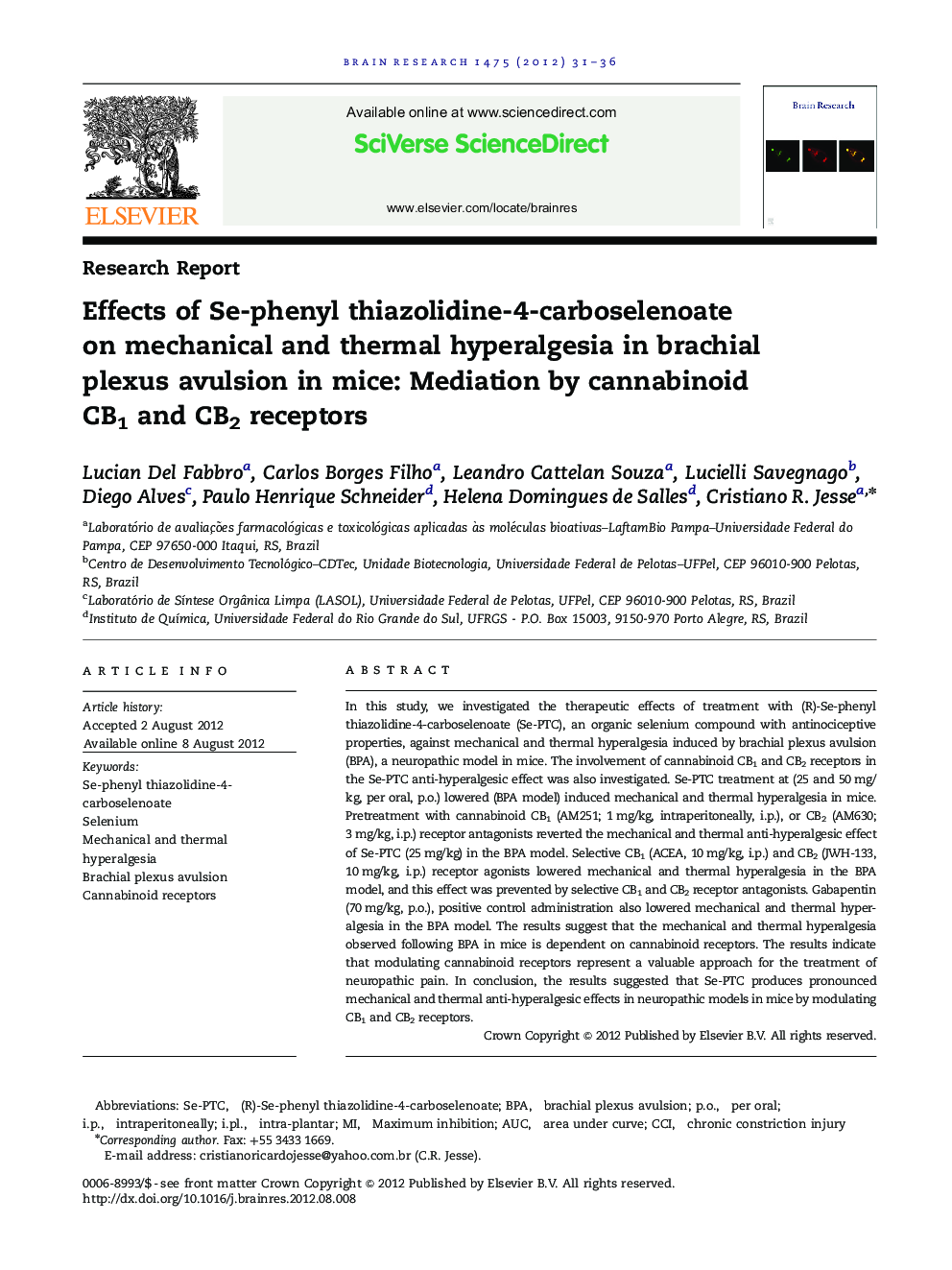| کد مقاله | کد نشریه | سال انتشار | مقاله انگلیسی | نسخه تمام متن |
|---|---|---|---|---|
| 4325076 | 1613964 | 2012 | 6 صفحه PDF | دانلود رایگان |

In this study, we investigated the therapeutic effects of treatment with (R)-Se-phenyl thiazolidine-4-carboselenoate (Se-PTC), an organic selenium compound with antinociceptive properties, against mechanical and thermal hyperalgesia induced by brachial plexus avulsion (BPA), a neuropathic model in mice. The involvement of cannabinoid CB1 and CB2 receptors in the Se-PTC anti-hyperalgesic effect was also investigated. Se-PTC treatment at (25 and 50 mg/kg, per oral, p.o.) lowered (BPA model) induced mechanical and thermal hyperalgesia in mice. Pretreatment with cannabinoid CB1 (AM251; 1 mg/kg, intraperitoneally, i.p.), or CB2 (AM630; 3 mg/kg, i.p.) receptor antagonists reverted the mechanical and thermal anti-hyperalgesic effect of Se-PTC (25 mg/kg) in the BPA model. Selective CB1 (ACEA, 10 mg/kg, i.p.) and CB2 (JWH-133, 10 mg/kg, i.p.) receptor agonists lowered mechanical and thermal hyperalgesia in the BPA model, and this effect was prevented by selective CB1 and CB2 receptor antagonists. Gabapentin (70 mg/kg, p.o.), positive control administration also lowered mechanical and thermal hyperalgesia in the BPA model. The results suggest that the mechanical and thermal hyperalgesia observed following BPA in mice is dependent on cannabinoid receptors. The results indicate that modulating cannabinoid receptors represent a valuable approach for the treatment of neuropathic pain. In conclusion, the results suggested that Se-PTC produces pronounced mechanical and thermal anti-hyperalgesic effects in neuropathic models in mice by modulating CB1 and CB2 receptors.
► Therapeutic effects of treatment with (R)-Se-phenyl thiazolidine-4-carboselenoate (Se-PTC).
► Mechanical and thermal hyperalgesia induced by brachial plexus avulsion (BPA).
► Pretreatment with cannabinoid CB1 or CB2 receptor antagonists reverted the anti-hyperalgesic effect of Se-PTC.
► Mechanical and thermal hyperalgesia observed following BPA in mice is dependent on cannabinoid receptors.
Journal: Brain Research - Volume 1475, 26 September 2012, Pages 31–36